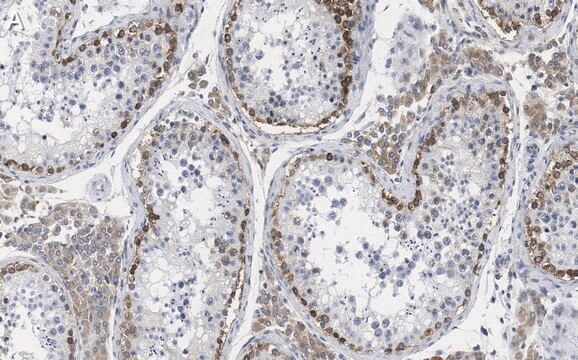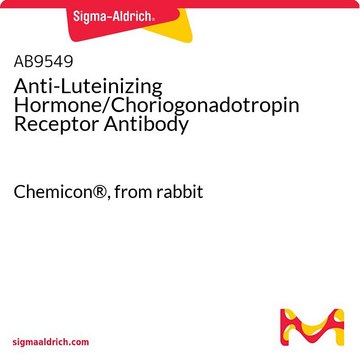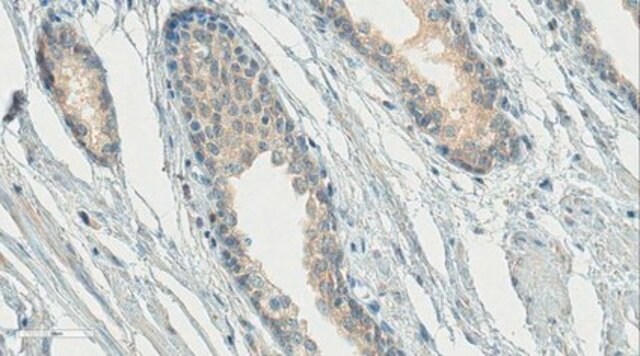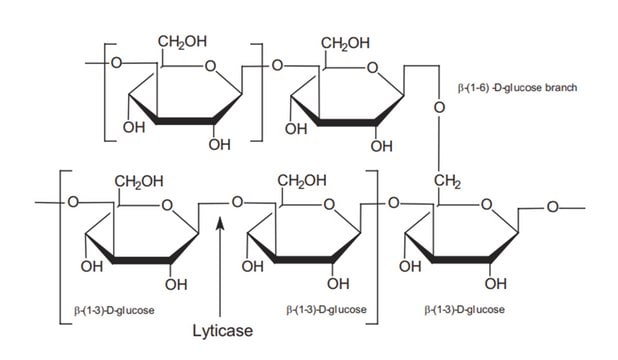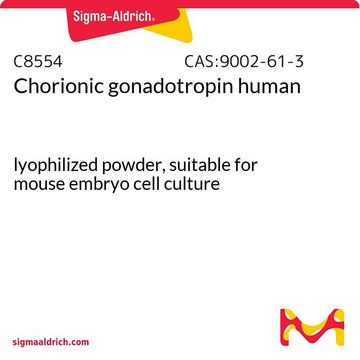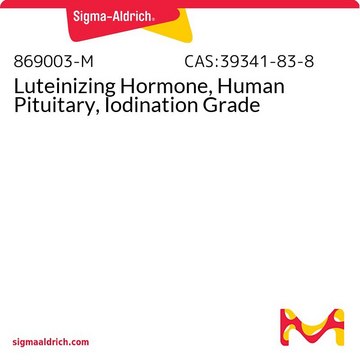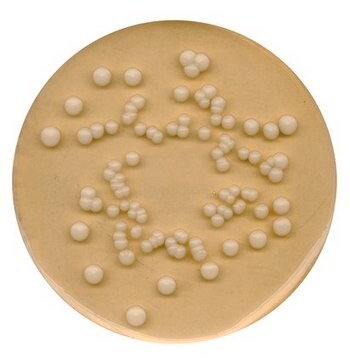MABN1794
Anti-GnRH-R Antibody, clone F1G4
clone FIG4, from mouse
Synonyme(s) :
Gonadotropin-releasing hormone receptor, GnRH receptor, GnRH-R, Leutinizing hormone-releasing hormone receptor, Luteinizing-releasing hormone receptor
About This Item
Produits recommandés
Source biologique
mouse
Niveau de qualité
Forme d'anticorps
purified immunoglobulin
Type de produit anticorps
primary antibodies
Clone
FIG4, monoclonal
Espèces réactives
human
Technique(s)
ELISA: suitable
dot blot: suitable
flow cytometry: suitable
immunohistochemistry: suitable (paraffin)
western blot: suitable
Isotype
IgG1λ
Numéro d'accès NCBI
Numéro d'accès UniProt
Conditions d'expédition
wet ice
Modification post-traductionnelle de la cible
unmodified
Informations sur le gène
human ... GNRHR (2798)
Description générale
Spécificité
Immunogène
Application
ELISA Analysis: A representative lot detected the immobilized immunogen peptide by ELISA (Karande, A.A., et al. (1995). Mol. Cell. Endocrinol. 114(102):51-56).
Flow Cytometry Analysis: A representative lot detected surface GnRH-R immunoreactivity on live human breast carcinoma T47D and ovarian carcinoma OVCAR-3 cells. Most likely due to low affinity antibody binding or unoptimized antibody concentration used, only ~50% of the T47D and ~10% of the OVCAR-3 populations were stained (Karande, A.A., et al. (1995). Mol. Cell. Endocrinol. 114(102):51-56).
Immunohistochemistry Analysis: A rerepsentative lot detected GnRH-R expression on gonadotropin-producing endocrine cells (gonadotropes) in pituitary, as well as among neurons in human hippocampus and neocortex, using formalin-fixed, paraffin-embedded human tissue sections (Wilson, A.C., et al. (2006). J. Endocrinol. 191(3):651–663).
Immunohistochemistry Analysis: A rerepsentative lot detected similar hippocampus GnRH-R immunoreactivity among Alzheimer′s diseased (AD) and age-matched control brain sections, while significanly decreased GnRH-R immunoreactivity associated with the apical dendrites of pyramidal neurons was seen in the AD brain using formalin-fixed, paraffin-embedded tissue sections (Wilson, A.C., et al. (2006). J. Endocrinol. 191(3):651–663).
Immunohistochemistry Analysis: A rerepsentative lot detected GnRH-R-positive cells in the anterior pituitary, but not the posterior pituitary using frozen human brain sections. Pre-blocking with immunogen peptide abolished the antibody staining (Karande, A.A., et al. (1995). Mol. Cell. Endocrinol. 114(102):51-56).
Western Blotting Analysis: A rerepsentative lot detected the expression of multiple GnRH-R variants in human cortex and pituitary tissue lysates, including the most prominent 30 kDa, 64 kDa, and 136 kDa bands. The 136 kDa band was seen significantly downregulated in the cortex, but not pituitary from Alzheimer′s diseased (AD) brain when compared to age-matched control (Wilson, A.C., et al. (2006). J. Endocrinol. 191(3):651–663).
Neuroscience
Hormones & Receptors
Qualité
Western Blotting Analysis: 2.0 µg/mL of this antibody detected GnRH-R in 10 µg of human pituitary tissue lysate.
Description de la cible
Forme physique
Stockage et stabilité
Autres remarques
Clause de non-responsabilité
Vous ne trouvez pas le bon produit ?
Essayez notre Outil de sélection de produits.
Code de la classe de stockage
12 - Non Combustible Liquids
Classe de danger pour l'eau (WGK)
WGK 1
Point d'éclair (°F)
Not applicable
Point d'éclair (°C)
Not applicable
Certificats d'analyse (COA)
Recherchez un Certificats d'analyse (COA) en saisissant le numéro de lot du produit. Les numéros de lot figurent sur l'étiquette du produit après les mots "Lot" ou "Batch".
Déjà en possession de ce produit ?
Retrouvez la documentation relative aux produits que vous avez récemment achetés dans la Bibliothèque de documents.
Notre équipe de scientifiques dispose d'une expérience dans tous les secteurs de la recherche, notamment en sciences de la vie, science des matériaux, synthèse chimique, chromatographie, analyse et dans de nombreux autres domaines..
Contacter notre Service technique

